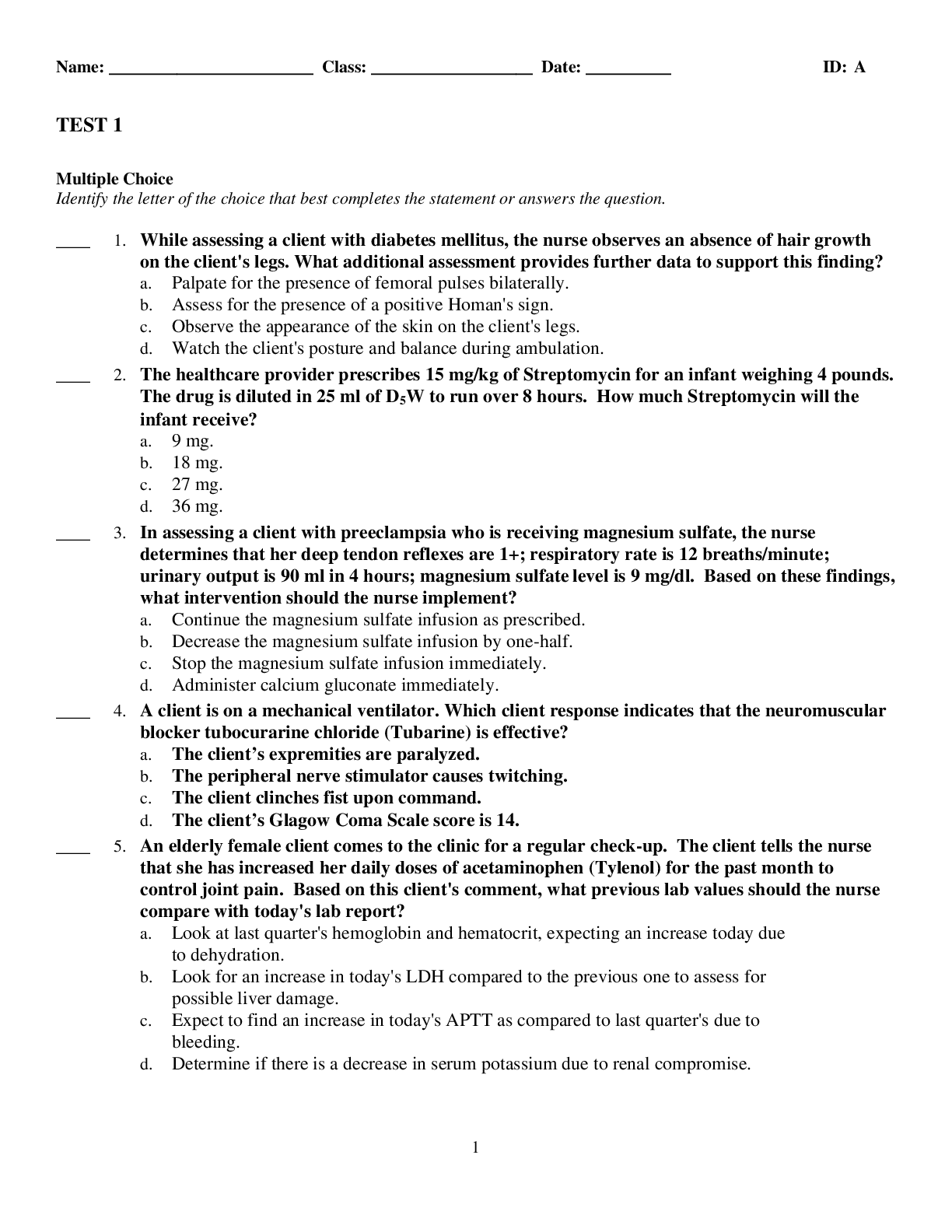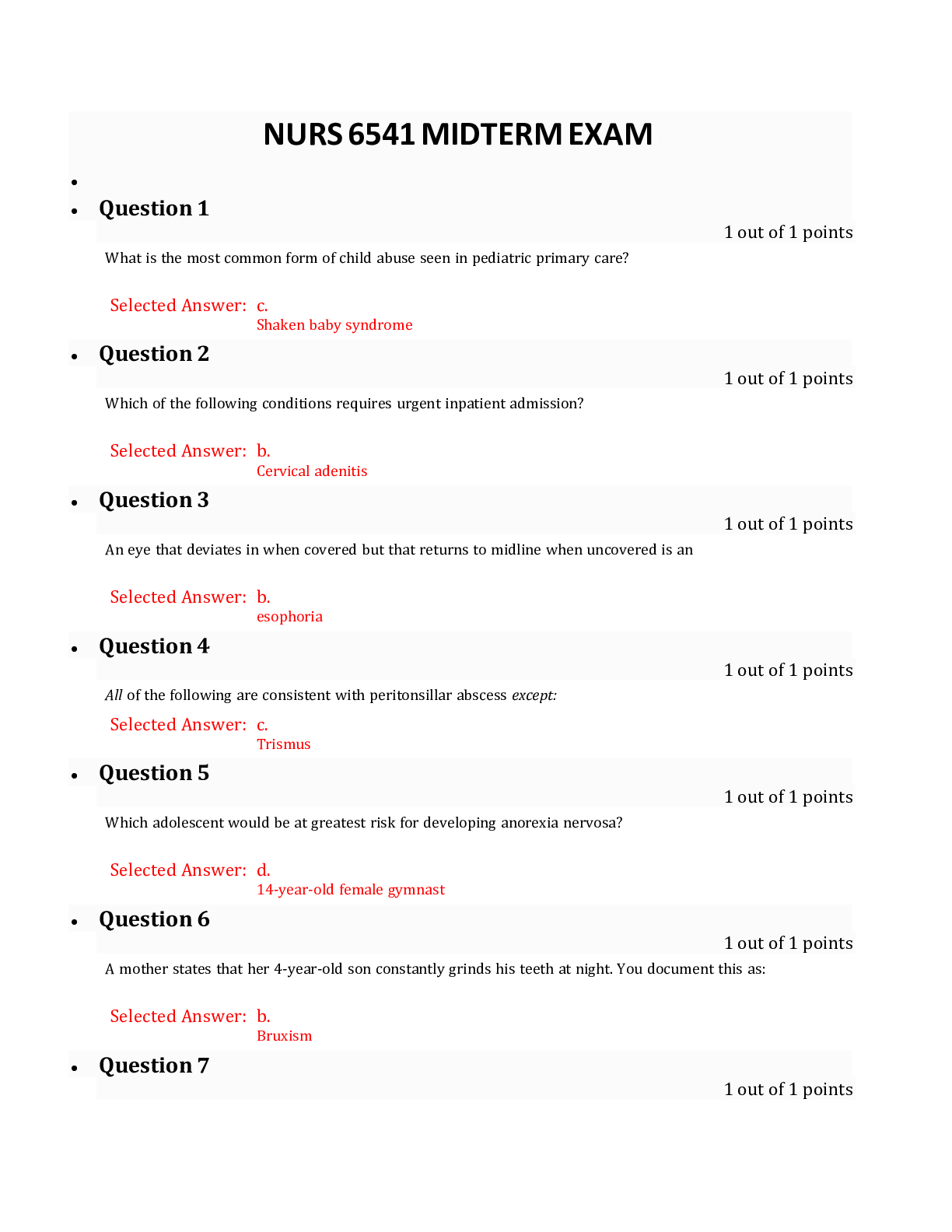Pathophysiology > EXAM > c13 CNURSING 295 - Questions and Answers (Latest Version) (All)
c13 CNURSING 295 - Questions and Answers (Latest Version)
Document Content and Description Below
N295 ch 13 MULTIPLE CHOICE 1. A physician tells the nurse that a patient’s vertebra prominens is tender and asks the nurse to reevaluate the area in 1 hour. The area of the body the nurse wil... l assess is: 2. A mother brings her 2-month-old daughter in for an examination and says, “My daughter rolled over against the wall, and now I have noticed that she has this spot that is soft on the top of her head. Is something terribly wrong?” The nurse’s best response would be: 3. The nurse notices that a patient’s palpebral fissures are not symmetric. On examination, the nurse may find that damage has occurred to which cranial nerve (CN)? 4. A patient is unable to differentiate between sharp and dull stimulation to both sides of her face. The nurse suspects: 5. When examining the face of a patient, the nurse is aware that the two pairs of salivary glands that are accessible to examination are the ___________ and ___________ glands. 6. A patient comes to the clinic complaining of neck and shoulder pain and is unable to turn her head. The nurse suspects damage to CN ______ and proceeds with the examination by _____________. 7. When examining a patient’s CN function, the nurse remembers that the muscles in the neck that are innervated by CN XI are the: 8. A patient’s laboratory data reveal an elevated thyroxine (T4) level. The nurse would proceed with an examination of the _____ gland. 9. A patient says that she has recently noticed a lump in the front of her neck below her “Adam’s apple” that seems to be getting bigger. During the assessment, the finding that leads the nurse to suspect that this may not be a cancerous thyroid nodule is that the lump (nodule): 10. The nurse notices that a patient’s submental lymph nodes are enlarged. In an effort to identify the cause of the node enlargement, the nurse would assess the patient’s: 11. The nurse is aware that the four areas in the body where lymph nodes are accessible are the: 12. A mother brings her newborn in for an assessment and asks, “Is there something wrong with my baby? His head seems so big.” Which statement is true regarding the relative proportions of the head and trunk of the newborn? 13. A patient, an 85-year-old woman, is complaining about the fact that the bones in her face have become more noticeable. What explanation should the nurse give her? 14. A patient reports excruciating headache pain on one side of his head, especially around his eye, forehead, and cheek that has lasted approximately to 2 hours, occurring once or twice each day. The nurse should suspect: 15. A patient complains that while studying for an examination he began to notice a severe headache in the frontotemporal area of his head that is throbbing and is somewhat relieved when he lies down. He tells the nurse that his mother also had these headaches. The nurse suspects that he may be suffering from: 16. A 19-year-old college student is brought to the emergency department with a severe headache he describes as, “Like nothing I’ve ever had before.” His temperature is 40° C, and he has a stiff neck. The nurse looks for other signs and symptoms of which problem? 17. During a well-baby checkup, the nurse notices that a 1-week-old infant’s face looks small compared with his cranium, which seems enlarged. On further examination, the nurse also notices dilated scalp veins and downcast or “setting sun” eyes. The nurse suspects which condition? 18. The nurse needs to palpate the temporomandibular joint for crepitation. This joint is located just below the temporal artery and anterior to the: 19. A patient has come in for an examination and states, “I have this spot in front of my ear lobe on my cheek that seems to be getting bigger and is tender. What do you think it is?” The nurse notes swelling below the angle of the jaw and suspects that it could be an inflammation of his: 20. A male patient with a history of acquired immunodeficiency syndrome (AIDS) has come in for an examination and he states, “I think that I have the mumps.” The nurse would begin by exam-ining the: 21. The nurse suspects that a patient has hyperthyroidism, and the laboratory data indicate that the patient’s T4 and T3 hormone levels are elevated. Which of these findings would the nurse most likely find on examination? 22. A visitor from Poland who does not speak English seems to be somewhat apprehensive about the nurse examining his neck. He would probably be more comfortable with the nurse examining his thyroid gland from: 23. A patient’s thyroid gland is enlarged, and the nurse is preparing to auscultate the thyroid gland for the presence of a bruit. A bruit is a __________ sound that is heard best with the __________ of the stethoscope. 24. The nurse notices that an infant has a large, soft lump on the side of his head and that his mother is very concerned. She tells the nurse that she noticed the lump approximately 8 hours after her baby’s birth and that it seems to be getting bigger. One possible explanation for this is: 25. A mother brings in her newborn infant for an assessment and tells the nurse that she has noticed that whenever her newborn’s head is turned to the right side, she straightens out the arm and leg on the same side and flexes the opposite arm and leg. After observing this on examination, the nurse tells her that this reflex is: 26. During an admission assessment, the nurse notices that a male patient has an enlarged and rather thick skull. The nurse suspects acromegaly and would further assess for: 27. When examining children affected with Down syndrome (trisomy 21), the nurse looks for the possible presence of: 28. A patient visits the clinic because he has recently noticed that the left side of his mouth is paralyzed. He states that he cannot raise his eyebrow or whistle. The nurse suspects that he has: 29. A woman comes to the clinic and states, “I’ve been sick for so long! My eyes have gotten so puffy, and my eyebrows and hair have become coarse and dry.” The nurse will assess for other signs and symptoms of: 30. During an examination of a female patient, the nurse notes lymphadenopathy and suspects an acute infection. Acutely infected lymph nodes would be: 31. The physician reports that a patient with a neck tumor has a tracheal shift. The nurse is aware that this means that the patient’s trachea is: 32. During an assessment of an infant, the nurse notes that the fontanels are depressed and sunken. The nurse suspects which condition? 33. The nurse is performing an assessment on a 7-year-old child who has symptoms of chronic watery eyes, sneezing, and clear nasal drainage. The nurse notices the presence of a transverse line across the bridge of the nose, dark blue shadows below the eyes, and a double crease on the lower eye-lids. These findings are characteristic of: 34. While performing a well-child assessment on a 5 year old, the nurse notes the presence of palpable, bilateral, cervical, and inguinal lymph nodes. They are approximately 0.5 cm in size, round, mobile, and nontender. The nurse suspects that this child: 35. The nurse has just completed a lymph node assessment on a 60-year-old healthy female patient. The nurse knows that most lymph nodes in healthy adults are normally: 36. During an examination of a patient in her third trimester of pregnancy, the nurse notices that the patient’s thyroid gland is slightly enlarged. No enlargement had been previously noticed. The nurse suspects that the patient: 37. During an examination, the nurse knows that the best way to palpate the lymph nodes in the neck is described by which statement? 38. During a well-baby checkup, a mother is concerned because her 2-month-old infant cannot hold her head up when she is pulled to a sitting position. Which response by the nurse is appropriate? 39. During an examination of a 3-year-old child, the nurse notices a bruit over the left temporal area. The nurse should: 40. During an examination, the nurse finds that a patient’s left temporal artery is tortuous and feels hardened and tender, compared with the right temporal artery. The nurse suspects which condi-tion? MULTIPLE RESPONSE 1. The nurse is assessing a 1-month-old infant at his well-baby checkup. Which assessment findings are appropriate for this age? Select all that apply. [Show More]
Last updated: 1 year ago
Preview 1 out of 14 pages
Instant download
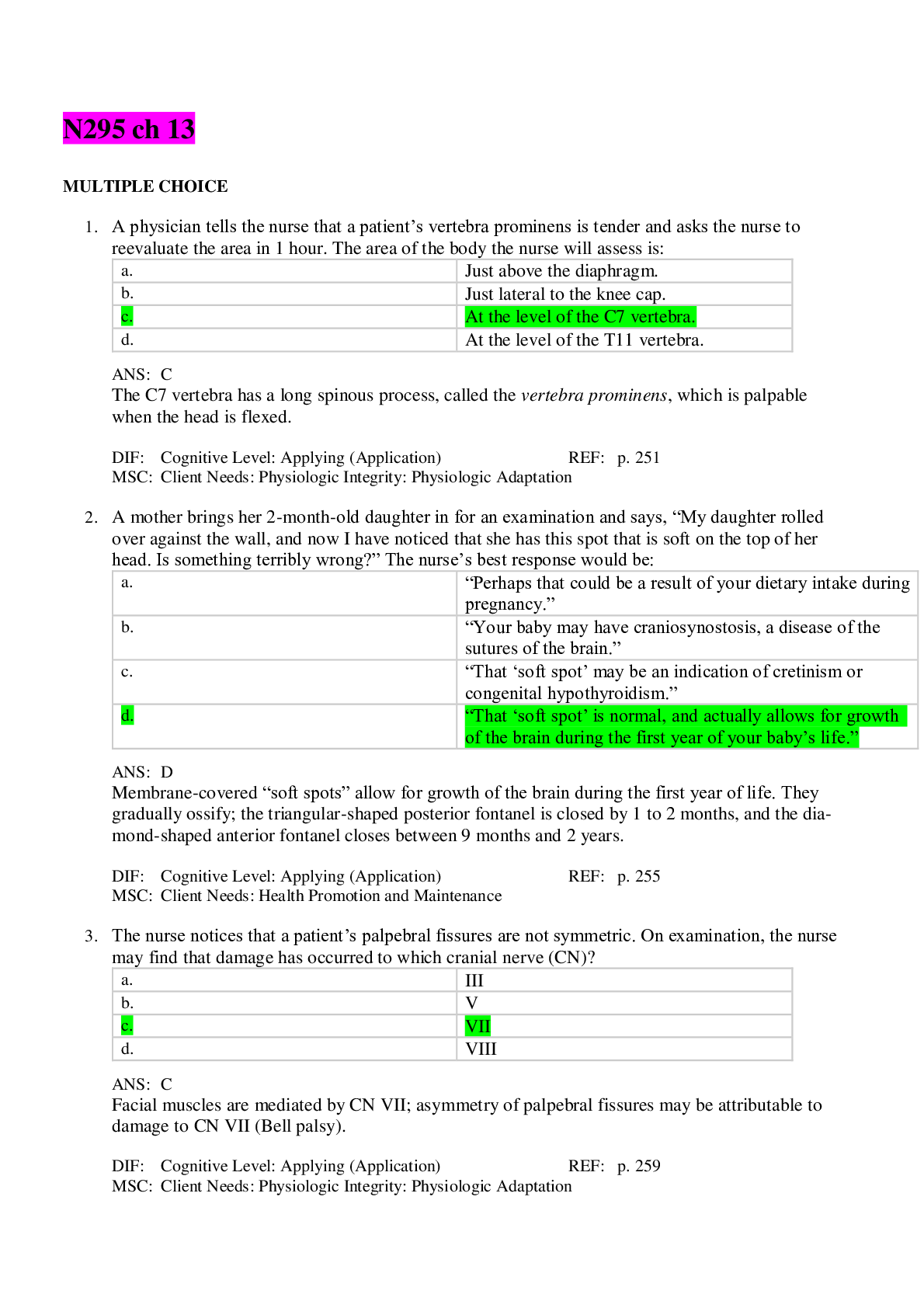
Buy this document to get the full access instantly
Instant Download Access after purchase
Add to cartInstant download
Also available in bundle (1)

CNURSING 295
CHAPTER 23 NEUROLOGIC SYSTEM,CHAPTER 21 ABDOMINAL ASSESSMENT,N295 EXAM 4,N295 EXAM 3,c22,c21,c19,c18,c17,c16,c15,c14,c13,c12,c11,c10,c9,c8,c7,c6,c5,c4,c2,c1
By Ajay25 3 years ago
$75
24
Reviews( 0 )
Document information
Connected school, study & course
About the document
Uploaded On
Jan 17, 2021
Number of pages
14
Written in
Additional information
This document has been written for:
Uploaded
Jan 17, 2021
Downloads
0
Views
59


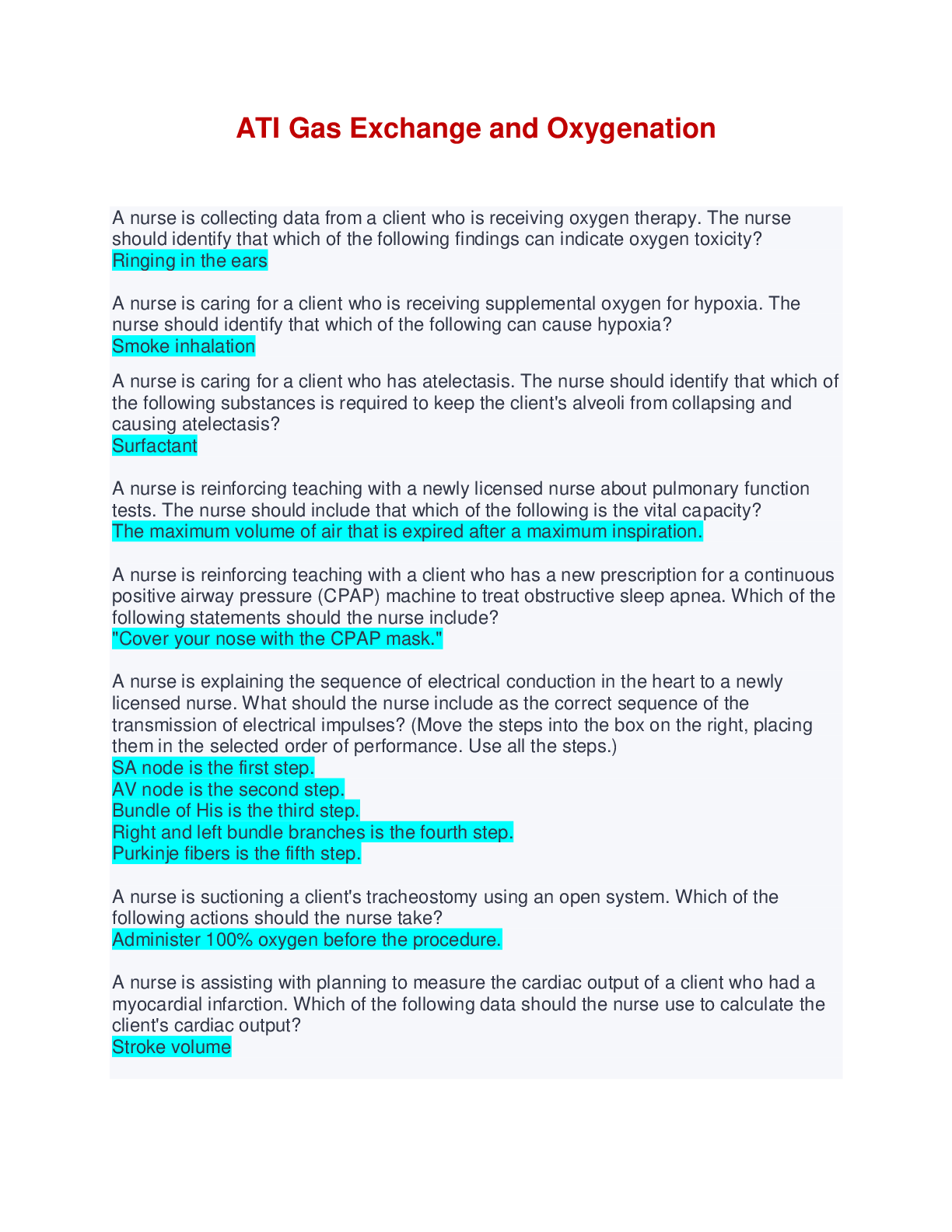






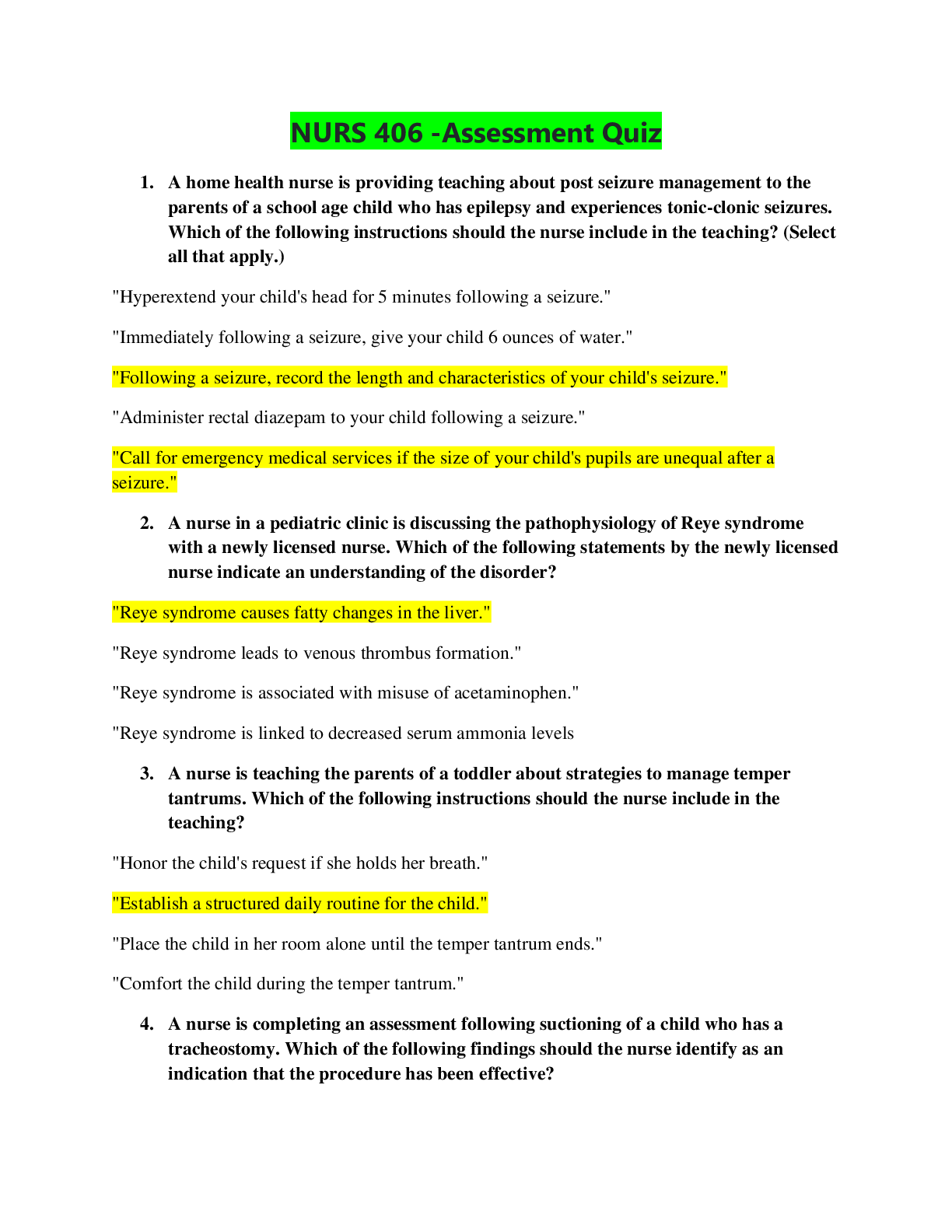



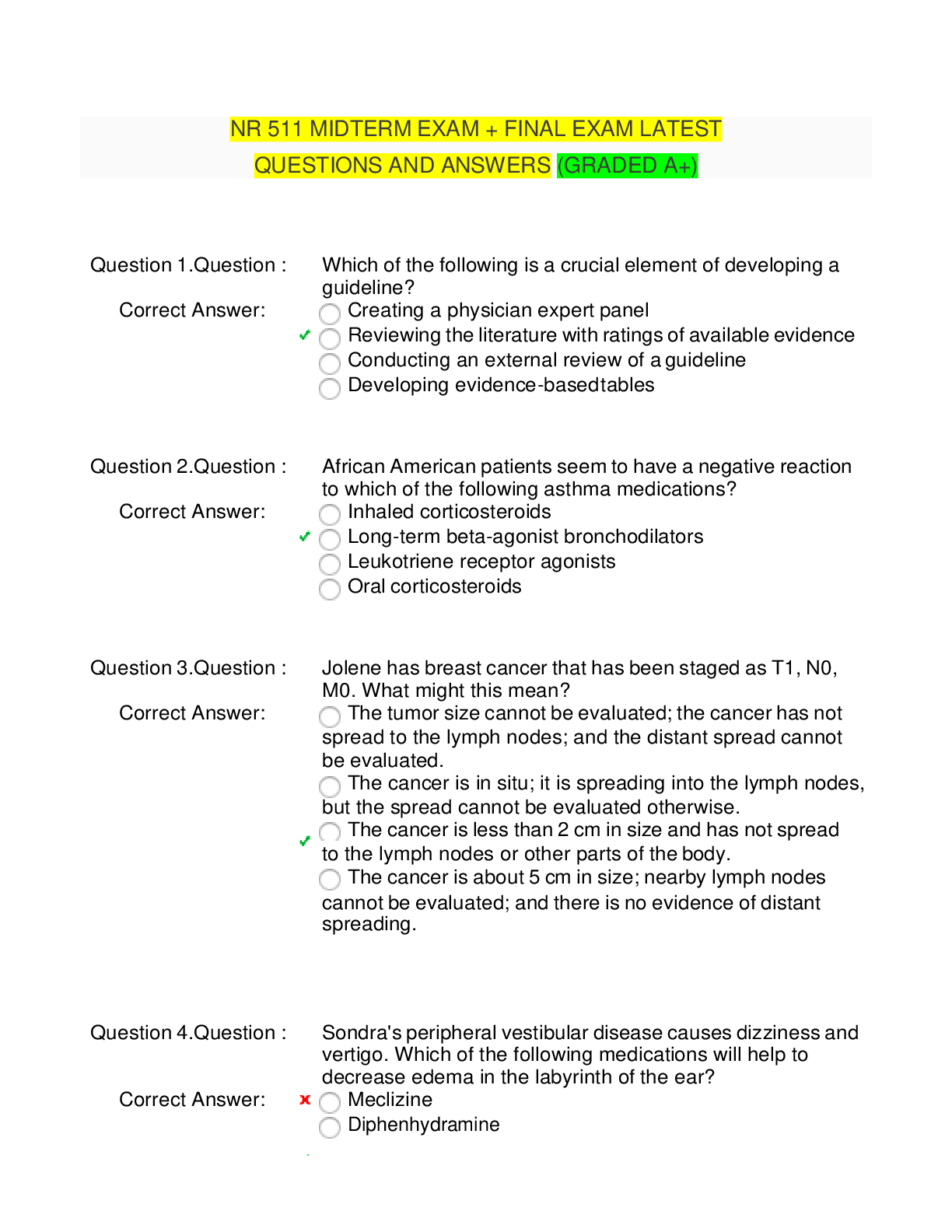

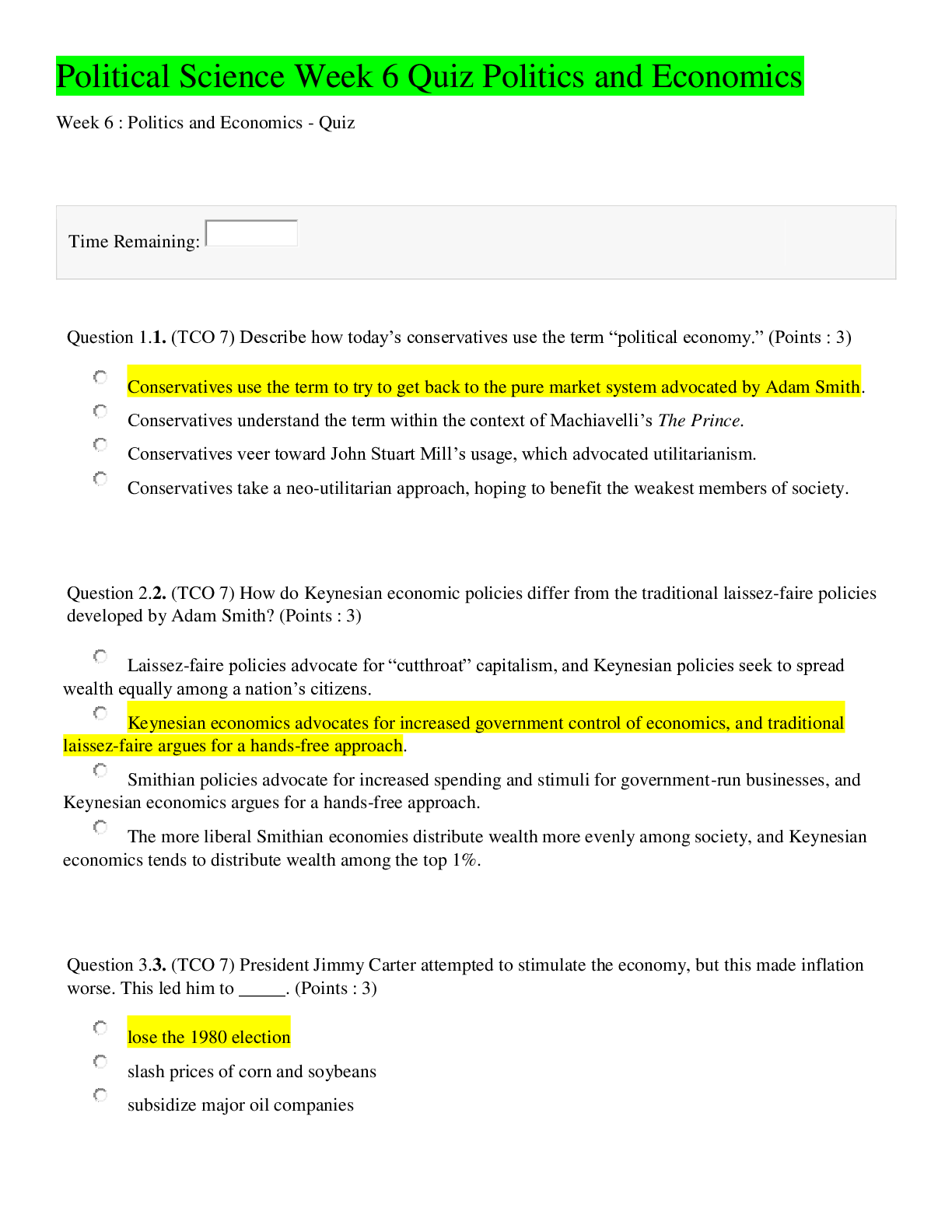
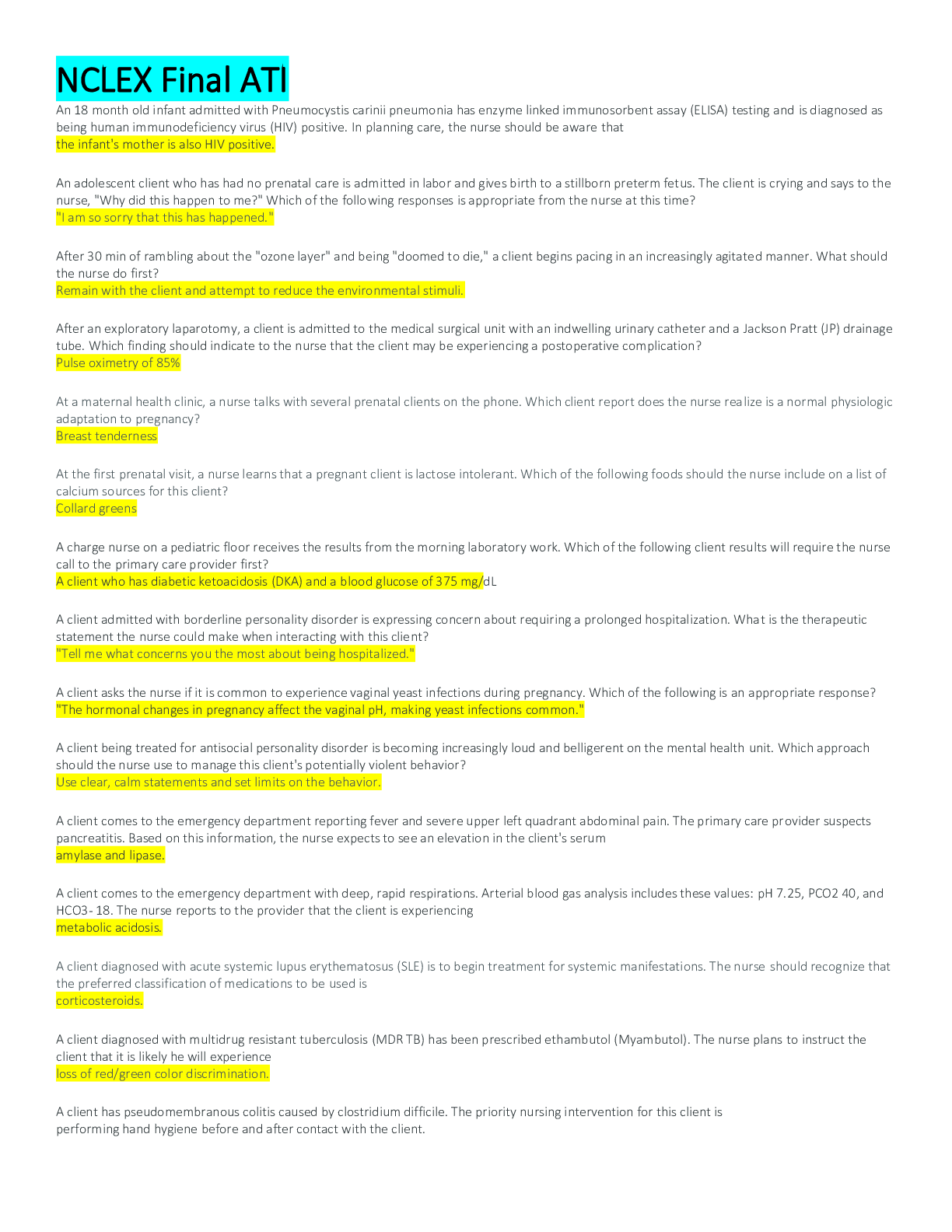
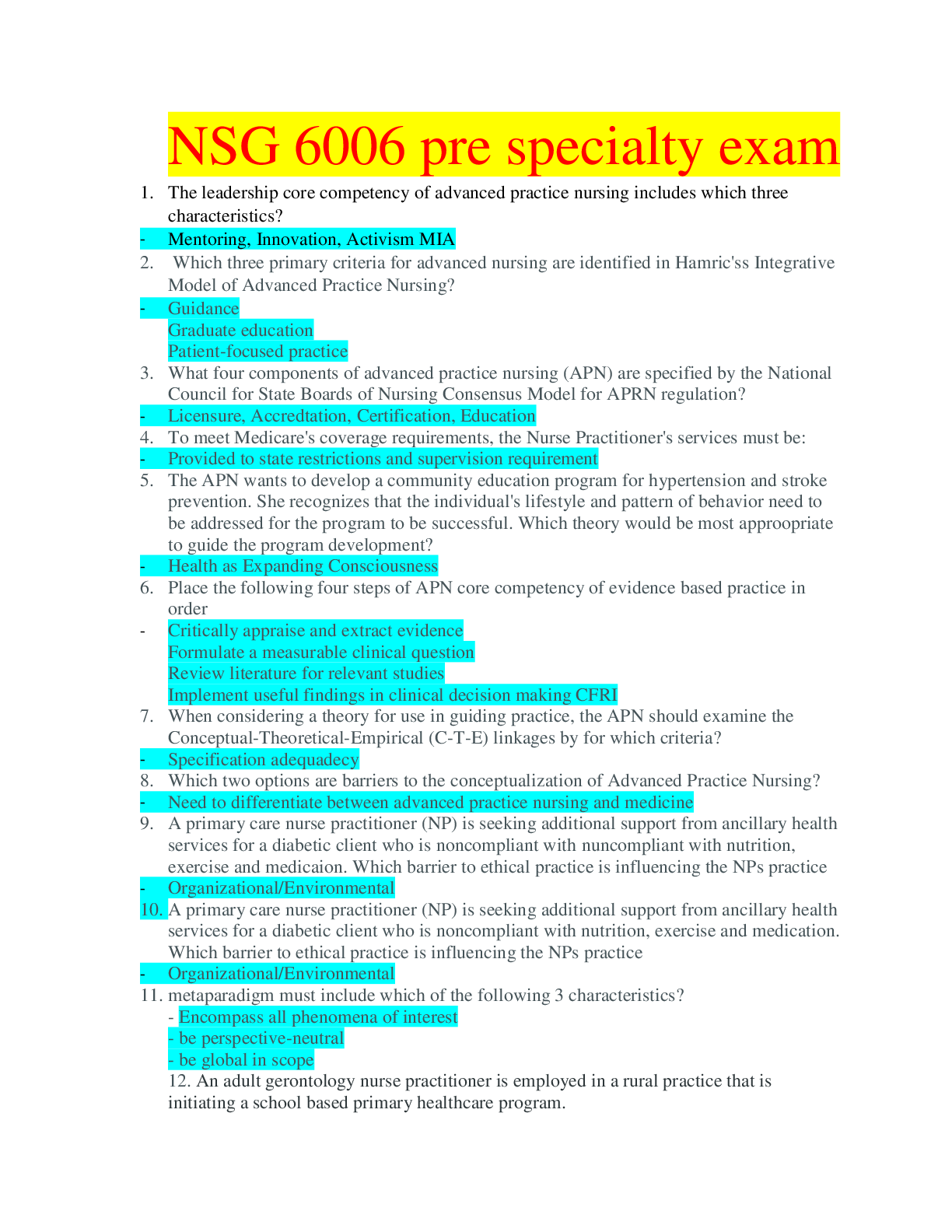
.png)
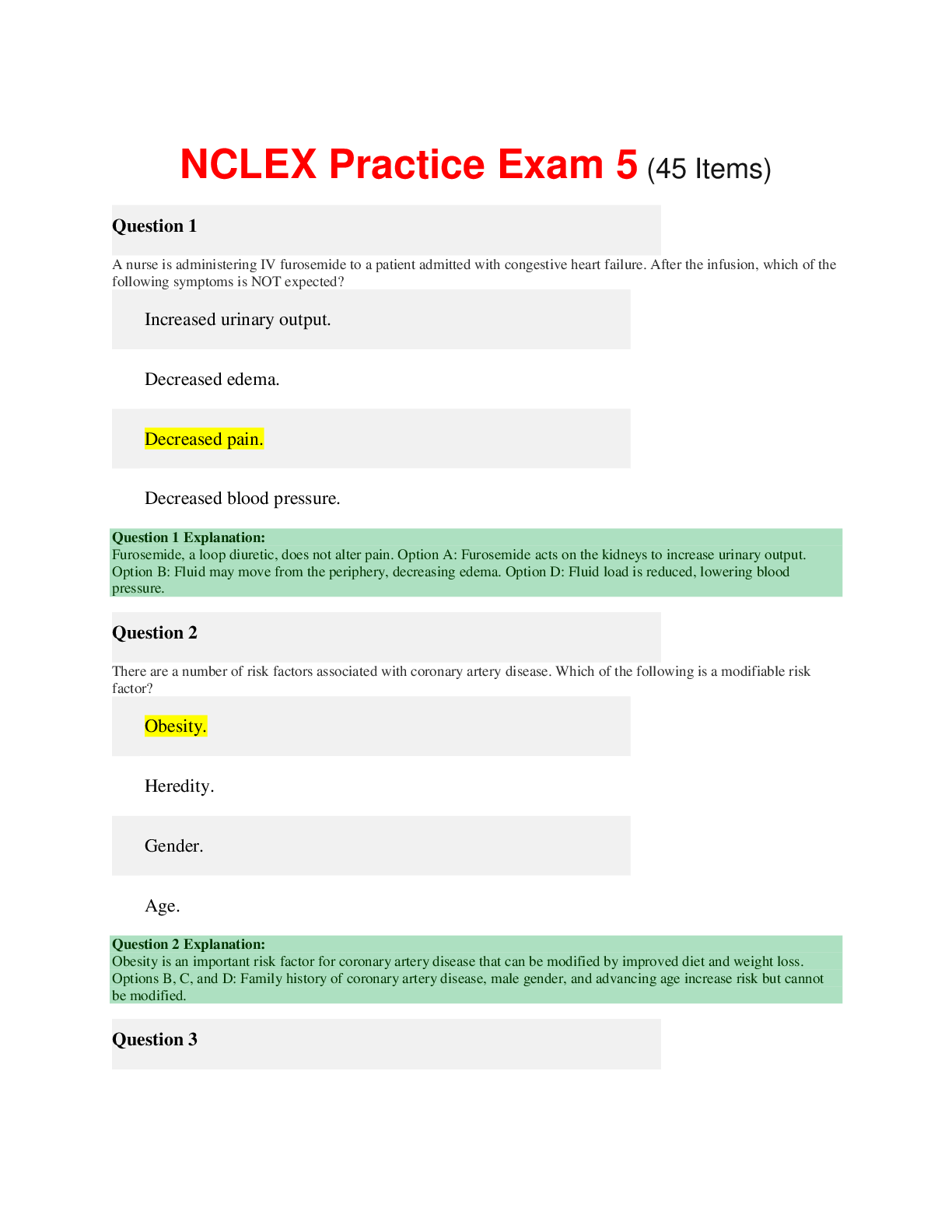
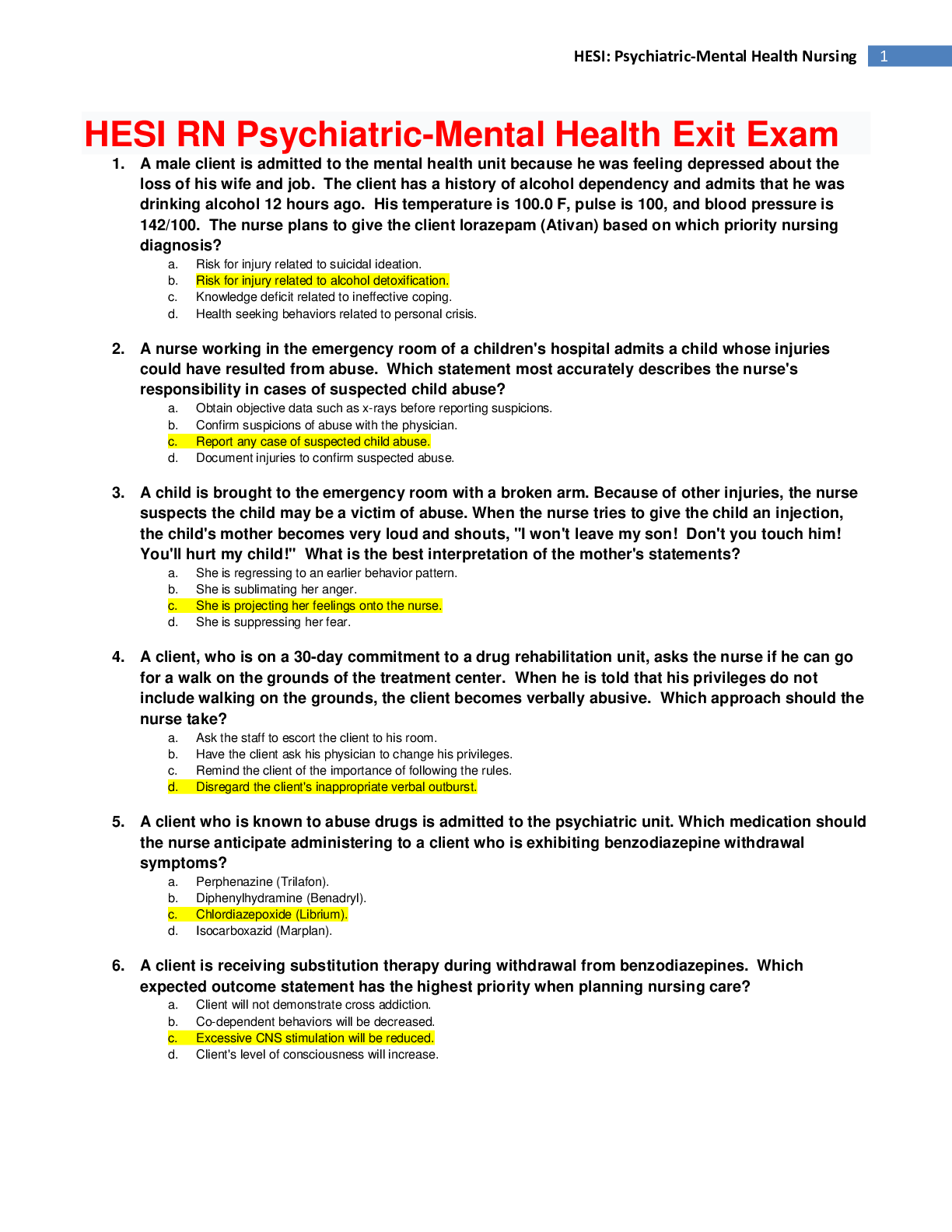
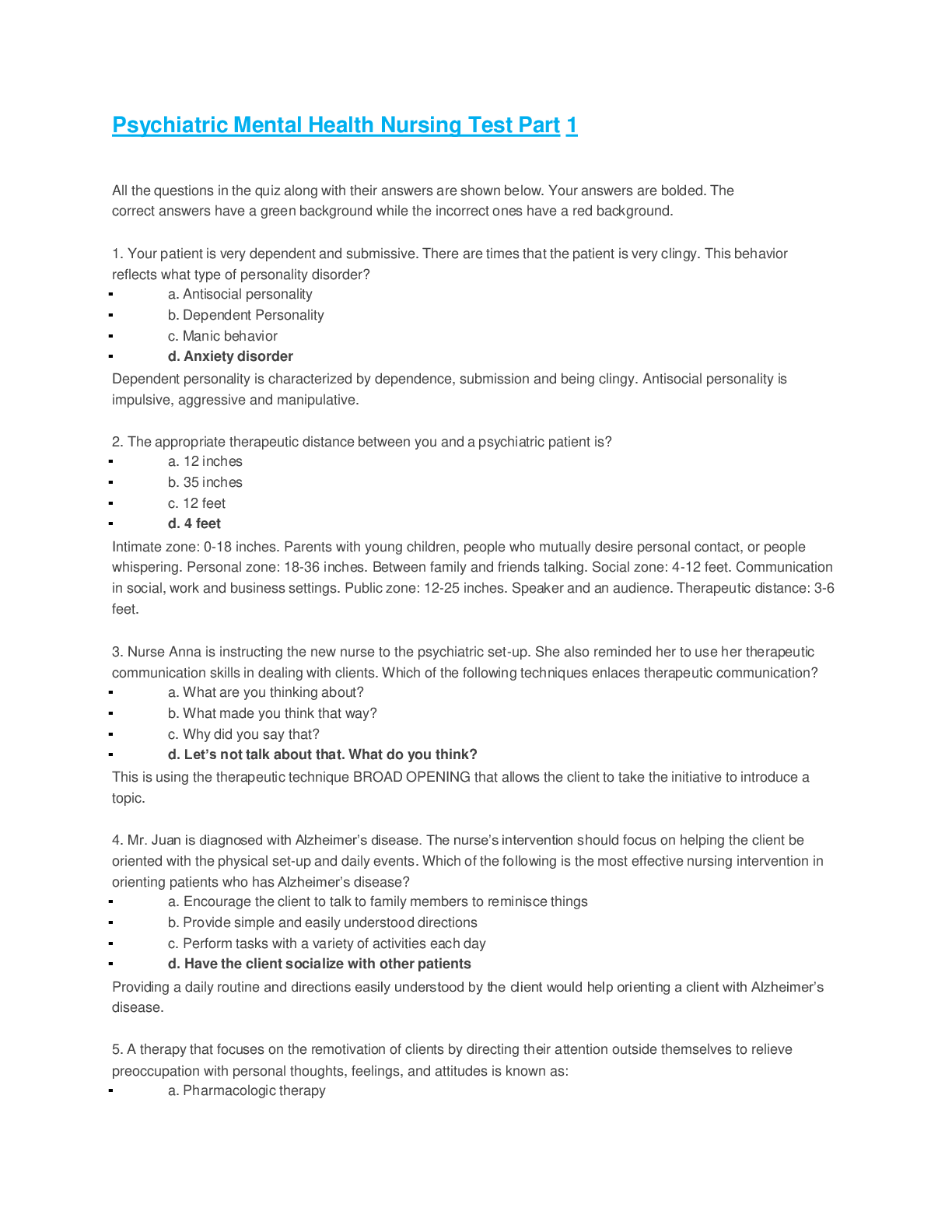
 – South university Savannah.png)
